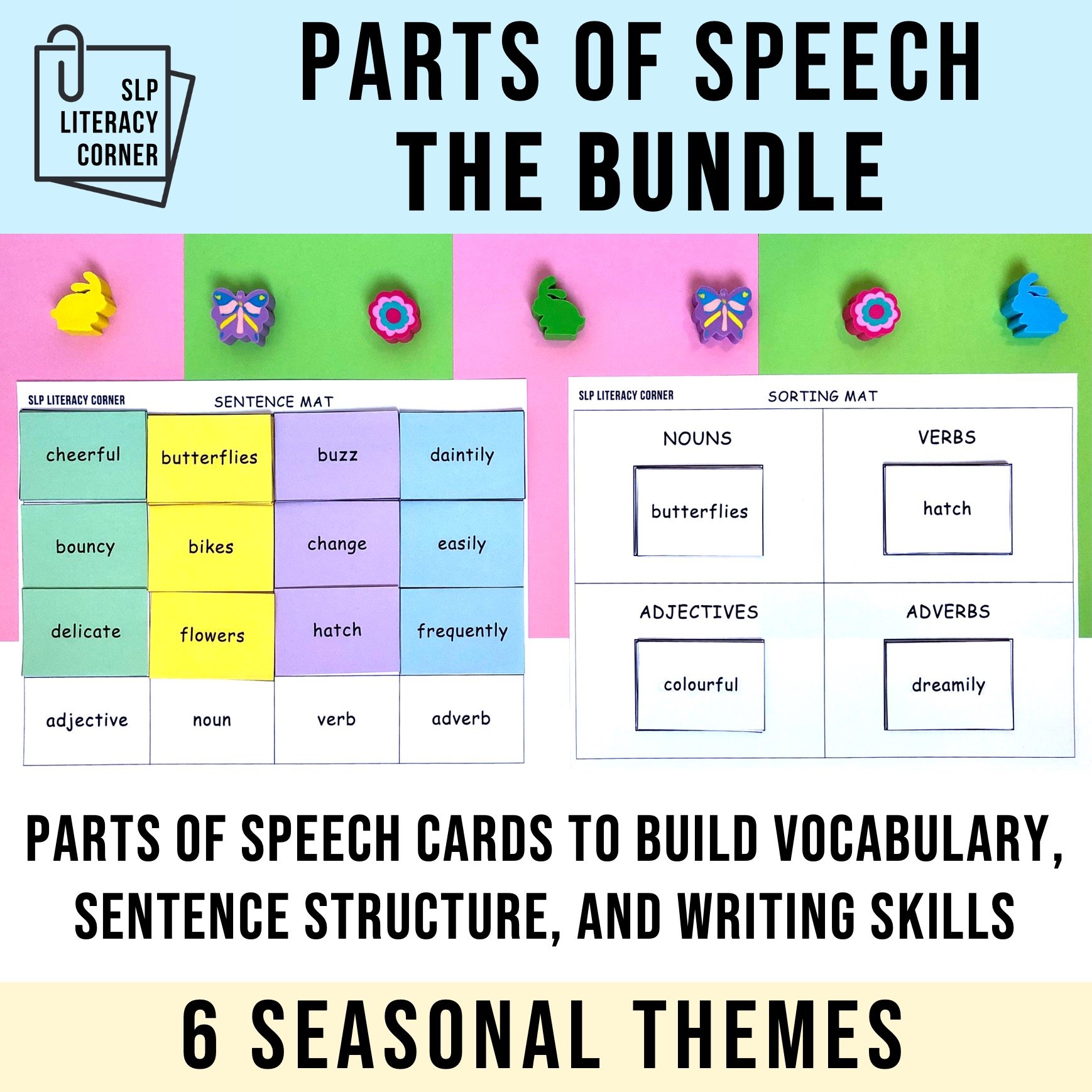My Poetry Reading Routine
Written by: Brianna Guild, MHSc SLP(C)
Date: April 11, 2025
Do you incorporate poetry into your literacy lessons?
April is National Poetry Month, so there is no better time than the present to start using poems (or use them more)!
Like most texts, you can work on a lot with just one poem if you have a solid routine. I use poems to work on phonological awareness, phonics, vocabulary, comprehension and oral reading fluency.
Phonological awareness: poems are traditionally known for supporting rhyming skills, but they also provide opportunities to target other key phonemic awareness skills, such as blending and segmenting, within the context of reading. For example, support students to use continuous blending (connected phonation) to sound out (read) the words in the poem that they do not already know by sight. If you do a follow-up activity spelling target words from the poem, have students first orally segment the word into individual sounds, then map each sound to its corresponding spelling.
Phonics: I try to select poems that have the sounds or spelling patterns we are learning or reviewing. For example, if a student is working on the concept that one sound can be represented by many different spellings, and the “long a” sound is our current focus, I would select a poem with different “long a” spellings (e.g., a, ai, ay, a_e). If you need a quick reference for “long vowel sounds” and their spellings, read this blog.
Vocabulary: have students work on identifying new and key vocabulary words in the poem. Then, further discuss these words through additional activities, such as creating definition entry pages, using them in sentences (oral or written), and making connections (to other words or personal experiences).
Comprehension: After reading, I always have students explain the poem in their own words to check their understanding. Depending on the poem, you can also use it to build background knowledge, strengthen sentence level comprehension, and practice skills like predicting and making inferences.
Reading fluency: poems typically have a natural rhythm when read aloud, making them especially useful for working on expression/intonation. The sentences in poems are often broken up into phrases on different lines, which also supports expression and rate (pacing). Poems offer a fun and engaging way to practice reading aloud, encouraging repeated readings that help improve overall fluency.
My Typical Poetry Reading Routine
(one-on-one sessions with students):
Review using poems to build reading fluency (accuracy, rate, expression). I often write the acronym ARE down the side of the page, and have the student remind me what each word means. If you need a refresher or a helpful reference, check out my reading fluency blog.
Educator reads the selected poem aloud and the student follows along, tracking the words with their finger while the educator reads. Students of all ages can benefit and learn from fluent oral reading models.
Educator and student engage in an oral discussion about the poem. In my sessions, we typically discuss the meaning of the poem and any new vocabulary words, identify rhyming words and the rhyme scheme, and identify target phonics words (e.g., the sounds or spelling patterns the student is learning or reviewing).
Student reads the poem aloud, and then reflects on their reading fluency (ARE). Educator provides praise and corrective feedback as needed.
Student rereads the poem aloud, and then reflects on their reading fluency (ARE), noting the aspects they improved during the second reading. Educator provides praise and corrective feedback as needed.
Repeated readings at home. I typically send the poem home and ask the student to read it aloud at least three times (I like to add that all family members, even pets, enjoy being read to)!
In the next session, follow up on repeated readings (were they done?), and have the student read the poem aloud again. Reflect on overall fluency compared to initial readings.
Sources for FREE Poems
Two Spring/Easter Poems from poetry4kids.com
“My Brother Was Brought by a Bunny” by Kenn Nesbit
Includes a mix of single and polysyllabic words
Contains past tense -ed and plural -s/-es suffixes
Different contractions (e.g., he’s, don’t, can’t, I’m)
Numerous tier 2 vocabulary words (e.g., tinted, stippled, spangles, slathered)
A variety of adjectives related to sight/how things look (e.g., colourful, bright, dots, spots, splashes).
Requires inferencing skills (e.g., Why was he in a basket? Why can’t the author see any of his body parts?)
“How to Eat a Chocolate Bunny” by Kenn Nesbit
Written as a sequence (first, then, then…)
Includes a mix of single and polysyllabic words
Contains different spellings of “long vowel” sounds (e.g., “long a” - take, ate, face, taste, tail)
Multiple examples of the letter “y” spelling the “long e” sound (e.g., bunny, belly, funny, sorry)
Some tier 2 vocabulary words (e.g., nibble, ruminate)
Great for discussing word choice, and specific versus general words (e.g., nibble vs. bite, eat vs. feast)
Work on predicting by discussing how the sister might react
I hope this blog post helps you get the most out of your poetry reading with students! Enjoy!
Join the SLP Literacy Corner email newsletter to get access to exclusive free resources, including reading fluency logs and Inside Out 2 wheels for fun “reading with feeling” activities. Sign up here!






